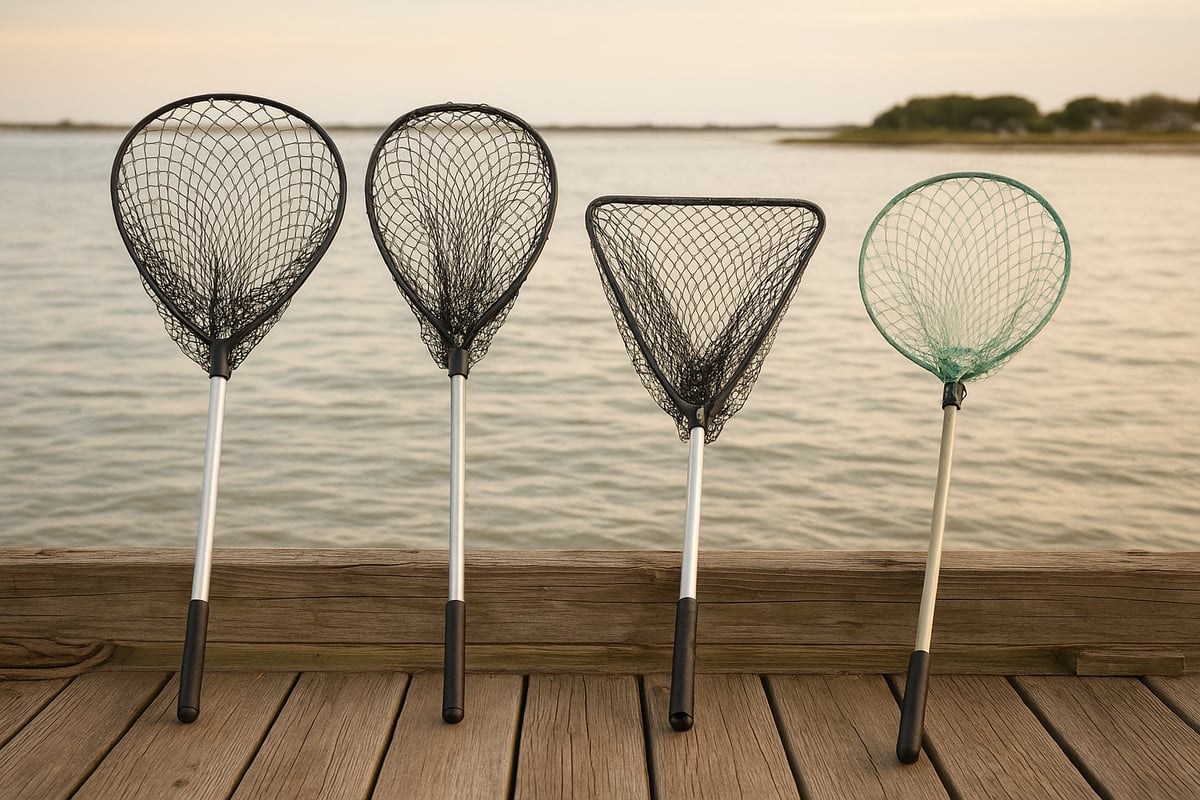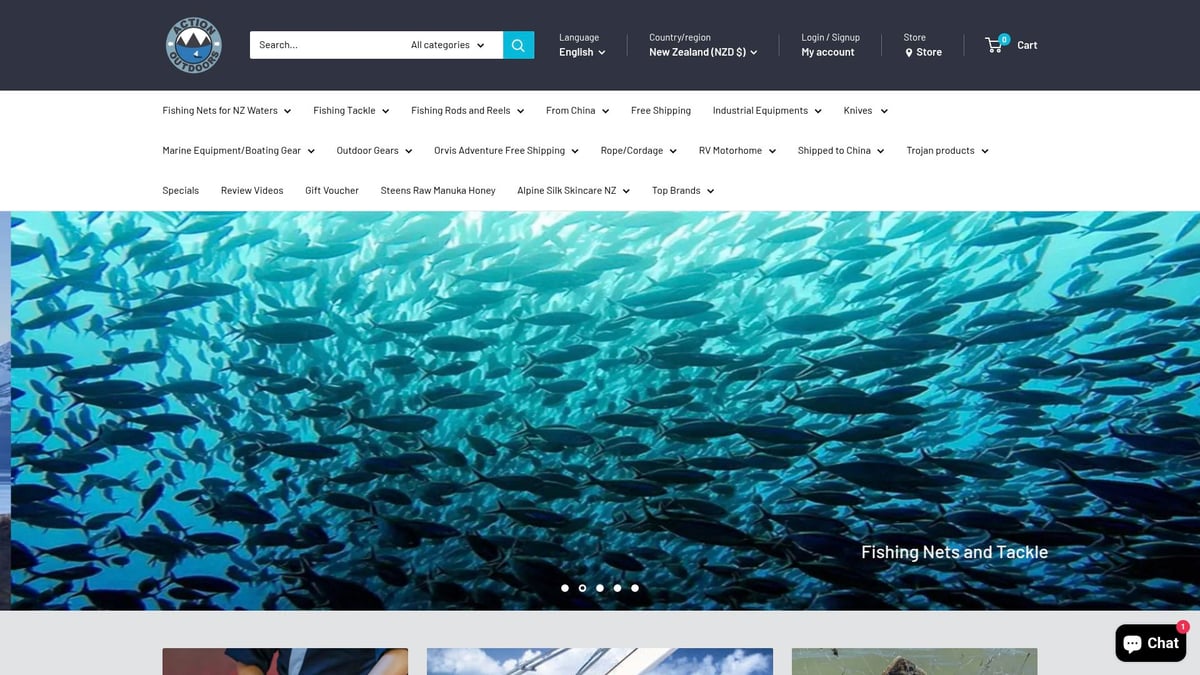Ready to boost your shrimping results in 2025? Unlock the secrets to a successful season by mastering the use of the shrimp dip net and applying expert-backed strategies. This guide delivers the latest tips, gear recommendations, and proven step-by-step methods to help you use your shrimp dip net with confidence.
Explore the essential types of shrimp dip nets, how to choose the right one for your needs, and the top techniques for maximizing your catch. You will also find advice on maintenance, legal considerations, and insider tips for getting the best results each time you head out.
Bigger catches start with the right knowledge and tools. Stay ahead of the curve with practical, actionable advice designed to make every shrimping trip more rewarding.
Understanding Shrimp Dip Nets: Types and Features
Choosing the right shrimp dip net is essential for any successful shrimping adventure. Whether you are a beginner or an experienced shrimper, understanding the different types and features available will help you select equipment that fits your needs and maximizes your catch.

Common Types of Shrimp Dip Nets
Shrimp dip net designs vary widely, each offering unique advantages for different shrimping environments. The most common shapes include round and pear-shaped nets. Round nets provide ample surface area for scooping, while pear-shaped versions allow for easier maneuvering in tight spots. Foldable and telescoping models are popular among shrimpers who prioritize portability and storage convenience.
The choice of materials also influences performance. Nets may feature nylon mesh, which is lightweight and dries quickly, or rubber-coated mesh that resists tangling and prolongs net life. Handles are typically crafted from aluminum for lightness or fiberglass for added strength and corrosion resistance.
Net size is another critical factor. Hoop diameters usually range from 12 to 20 inches, with deeper nets designed to hold more shrimp per scoop. Floating models, such as the Ozark Trail Floating Dip Net, are ideal for boat shrimping, as they remain accessible if dropped. Non-floating nets suit shore or pier use where retrieval is easier.
When considering handles, shrimpers can choose between fixed and extendable types. Extendable handles, like those from RESTCLOUD, improve reach and adaptability, especially in varying water depths. Leading brands such as Danielson, RESTCLOUD, and Shurhold offer a range of options to suit different preferences.
Collapsible nets are favored for easy transport and storage, fitting neatly into gear bags. However, rigid nets often provide more consistent performance in rough conditions. For a more detailed breakdown of shrimp dip net models and their uses, the Shrimp nets for sale guide is an excellent resource.
Key Features to Consider
When selecting a shrimp dip net, certain features can make a significant difference in your shrimping results. Mesh size, for example, affects shrimp retention and water flow. Fine mesh prevents smaller shrimp from escaping, while larger mesh allows for faster water drainage.
Handle length and ergonomics are crucial for comfort, especially during extended shrimping sessions. Lightweight materials reduce arm fatigue, and a well-balanced design ensures easy handling. Adjustable handles cater to users of different heights and shrimping locations.
Durability is a top priority for any shrimp dip net. Look for corrosion-resistant materials, reinforced stitching, and UV protection to withstand harsh marine environments. Accessories such as wrist straps, carabiners, and replaceable nets add convenience and extend the net’s lifespan.
Price ranges from $5 to $55, depending on features and brand reputation. RESTCLOUD nets, for example, are frequently rated around 4.1 out of 5 stars, while Danielson nets achieve even higher marks at 4.6. Customer reviews often highlight the importance of sturdy construction and ease of use. Comparing these features ensures you invest in a shrimp dip net that delivers lasting performance and value.
Choosing the Best Shrimp Dip Net for Your Needs
Selecting the right shrimp dip net is essential for a productive and enjoyable shrimping experience. With so many models and configurations available, understanding how to match your net to the environment and your own preferences can make all the difference.

Matching Net Type to Shrimping Conditions
The ideal shrimp dip net depends largely on where and how you plan to shrimp. Start by evaluating the water depth and clarity. For shallow, clear waters, a net with a smaller hoop (12–15 inches) and fine mesh ensures you can maneuver easily and retain even the smallest shrimp. In deeper or murky waters, a larger hoop (up to 20 inches) and robust mesh are better for handling strong currents and maximizing your catch.
Next, consider the environment—saltwater or freshwater. Saltwater requires corrosion-resistant materials like anodized aluminum or coated fiberglass to ensure your shrimp dip net lasts season after season. Freshwater environments are generally less harsh, but durability remains key.
Your shrimping location also plays a significant role. Shoreline and pier shrimpers often prefer telescoping or foldable nets for portability and storage, while boat-based enthusiasts may choose rigid, longer-handled nets for extended reach over water. If you travel frequently, foldable models are easier to stow in vehicles or backpacks.
Budget is another important factor. Prices range from $5 for basic models to $55 for premium brands with advanced features. While cost is a concern, prioritize quality and reliability. Reading online reviews can reveal how a shrimp dip net performs in real-world conditions, highlighting strengths and any recurring issues.
For a deeper dive into how to choose the right net for your fishing style and conditions, check out these fishing net selection tips. Comparing customer feedback and expert recommendations will help you identify top-rated nets, such as the RESTCLOUD telescoping net for travel or the Ozark Trail floating net for easy retrieval.
Quick Comparison Table
| Net Type | Best For | Portability | Price Range | Notable Feature |
|---|---|---|---|---|
| Telescoping | Shore, pier, travel | High | $10–$40 | Adjustable handle length |
| Foldable | Backpackers | Very High | $15–$35 | Compact storage |
| Floating | Boat, kids | Moderate | $12–$30 | Stays atop water |
| Rigid | Heavy use, boats | Low | $20–$55 | Maximum stability |
Choosing the right shrimp dip net is about balancing your environment, fishing style, and practical needs.
Ergonomics and User Comfort
Comfort can make or break a long shrimping session. Look for a shrimp dip net with an ergonomic, non-slip grip, especially if you fish in wet or muddy conditions. A well-designed handle reduces hand fatigue and ensures a secure hold, even after hours of use.
Lightweight materials like aluminum or fiberglass are preferred for their strength-to-weight ratio. A lighter shrimp dip net allows for quick, repetitive dipping without straining your arm or shoulder. Handle adjustability is another key feature, enabling users of different heights to maintain proper posture and reach.
For example, the RESTCLOUD telescoping model extends up to 59 inches, accommodating both children and adults. Adjustable handles also make it easier to fish from varying heights, such as docks or boat decks.
When comparing options, check product specifications carefully. Weight, handle length, and grip material all contribute to user comfort. Reading user reviews can provide insights into real-world ergonomics, helping you avoid nets that are too heavy or awkward for extended use.
Ultimately, selecting a shrimp dip net that suits your physical needs will keep you comfortable and focused, leading to more successful and enjoyable outings.
Step-by-Step Guide: How to Use a Shrimp Dip Net Effectively
Mastering the use of a shrimp dip net requires more than just enthusiasm. Preparation, proper setup, and refined technique all play a role in ensuring your time on the water is both productive and enjoyable. Follow this step-by-step guide to make every shrimping trip a success.

Preparing for Shrimping
Start by researching the best locations and timing for shrimping in your area. Tidal movement, season, and water temperature all impact shrimp activity. Early evening or night, especially during new or full moon phases, often yields better results for those using a shrimp dip net.
Gather your essential gear before heading out. You will need your shrimp dip net, a sturdy bucket or basket for your catch, gloves for hand protection, and a reliable flashlight or headlamp if shrimping at night. Safety should always come first, so be sure to wear personal flotation devices and choose non-slip footwear. For added peace of mind, consider browsing life jackets and safety gear to ensure you are well-prepared for any conditions.
Check local weather and tide charts. Avoid strong currents, as these can make using your shrimp dip net more challenging and less effective. Careful preparation sets the stage for a successful outing.
Setting Up Your Net
Before entering the water, assemble your shrimp dip net according to the manufacturer's instructions. If your net is telescoping or foldable, ensure all joints are securely locked in place. Inspect the mesh and frame for any tears, tangles, or bent sections that could hinder performance.
Attach any accessories that will help you during your trip. Wrist straps prevent accidental drops, while floatation aids keep your net visible and retrievable if it slips from your grip. Confirm that the handle is adjusted to a comfortable length for your height and reach.
A well-prepared shrimp dip net is crucial for maximizing efficiency. Taking a few moments to check for issues now will prevent frustration and lost catches later.
The Dipping Technique: Step by Step
Position yourself in shallow water where you can see the bottom or areas where shrimp tend to gather. Hold your shrimp dip net with a relaxed but firm grip, keeping your arms slightly bent for better control and reach.
Lower the net into the water slowly to avoid disturbing the shrimp. If you are shrimping at night, use your flashlight to spot movement and attract shrimp closer. When you see shrimp within range, use a swift, smooth scooping motion to trap them inside the net. Be careful not to create large splashes, as this can scare shrimp away.
Once you have shrimp in your net, lift it out of the water with a steady motion. Quickly and gently empty the contents into your bucket. Reposition and repeat the process, refining your technique with each dip for improved results. Practice and patience with your shrimp dip net will lead to more consistent and rewarding catches.
Maximizing Your Catch
Timing is everything when using a shrimp dip net. Focus your efforts during peak activity periods, such as dusk, dawn, or specific tidal changes linked to local shrimp movement. Use bait or attractants, like crushed fish or commercial shrimp bait, to draw shrimp closer to your location.
Work with a partner for even better results. One person can use a light to attract and spot shrimp, while the other operates the shrimp dip net. Rotate positions to cover more area and prevent fatigue. Try different spots and water depths if shrimp become scarce, as changing your location can often restart a slow session.
Consistency and adaptability are key. Pay attention to environmental cues, and do not hesitate to adjust your approach. The more you experiment with your shrimp dip net, the better you will understand what works best in each scenario.
Troubleshooting Common Issues
Even experienced shrimpers encounter challenges. If your shrimp dip net snags on rocks or vegetation, gently wiggle it free instead of pulling forcefully, which could damage the mesh. Avoid dragging your net along the bottom where debris is likely to accumulate.
Bycatch is another common issue. When you catch unwanted species, release them promptly and safely to minimize harm. For murky or low-visibility conditions, use brighter lights and slow your movements to improve your chances of spotting shrimp.
If you notice a drop in your catch rate, review your technique and check your shrimp dip net for hidden damage or tangles. Adjusting your dipping angle or switching to a different mesh size can also help. Regular troubleshooting ensures you get the most out of every trip with your shrimp dip net.
Maintenance and Care: Extending the Life of Your Shrimp Dip Net
Proper maintenance is essential for getting the most out of your shrimp dip net. Investing time in routine care not only protects your gear but also ensures peak performance on every trip. By following best practices for cleaning, storage, and repairs, you can keep your shrimp dip net in top condition for many seasons.
Cleaning and Storage Best Practices
Maintaining a shrimp dip net begins with thorough cleaning after each use. Rinse the net and handle with fresh water to remove salt, mud, and organic debris. This step prevents corrosion and discourages the growth of mildew.
After rinsing, carefully shake out excess water and hang the shrimp dip net in a well-ventilated area. Avoid storing your net while wet, as trapped moisture can cause unpleasant odors and degrade materials over time.
Store the net in a cool, dry place away from direct sunlight. UV rays can weaken mesh fibers and make the net brittle. If possible, keep your shrimp dip net loosely coiled or hanging to prevent creases and preserve its shape.
Quick cleaning checklist:
- Rinse net and handle thoroughly
- Remove debris and inspect for tangles
- Dry completely before storage
- Store in a shaded, dry location
Following these steps will help extend the lifespan of your shrimp dip net and ensure it is always ready for action.
Repair and Replacement Tips
Even with diligent care, a shrimp dip net may eventually show signs of wear. Regularly inspect your net for holes, frayed stitching, or bent frames. Early detection allows for simple repairs before problems worsen.
For small tears or holes, patch kits designed for fishing nets work well. Replace damaged mesh when repairs are no longer effective. Handles that become bent or loose should be straightened or swapped out, ensuring safe and reliable use.
If you need guidance, many manufacturers and retailers provide helpful resources. For step-by-step repair techniques and product recommendations, visit Net maintenance and repair advice for practical videos and tips. This can help you determine whether to repair or replace parts of your shrimp dip net.
Repair essentials:
- Inspect after every trip
- Use patch kits for minor mesh damage
- Replace handles or mesh as needed
- Seek expert advice for complex repairs
Timely repairs prevent minor issues from turning into costly replacements, maximizing the value of your shrimp dip net.
Longevity Insights from Customer Reviews
User feedback highlights common durability concerns and success stories for shrimp dip net owners. Many customers stress the importance of rinsing after saltwater use and drying nets fully to avoid premature wear.
Reviews often mention that reinforced stitching and corrosion-resistant materials significantly extend the life of a shrimp dip net. Brands like RESTCLOUD and Danielson receive praise for their robust construction and reliability over multiple seasons.
A common theme is that investing in quality materials pays off. Customers who follow proper maintenance routines report fewer issues and longer-lasting performance from their shrimp dip net. By learning from these real-world experiences, you can make informed choices and enjoy dependable results.
Legal and Environmental Considerations for Shrimping in 2025
Navigating the legal and environmental landscape is crucial for anyone using a shrimp dip net in 2025. Regulations are designed to ensure healthy shrimp populations and protect aquatic habitats for future generations. Before heading out, understanding the latest rules can help you avoid fines and contribute to sustainable shrimping.
Legal Requirements and Regulations
Every region has specific rules for shrimping with a shrimp dip net. These can include required fishing licenses, seasonal closures, and daily bag limits. For example, some states mandate minimum mesh sizes to prevent the harvest of juvenile shrimp, while others restrict shrimp dip net dimensions or handle lengths.
It is essential to check local guidelines before your trip, as laws may change yearly. The Recreational Shrimping Regulations by FWC offer a comprehensive overview of current licensing and bag limits for Florida, serving as a model for what to look for in your area. Staying compliant not only avoids penalties but also supports long-term shrimp stocks.
Environmental Best Practices
Using the correct shrimp dip net helps minimize environmental impact. Select a mesh size that targets legal-sized shrimp, which reduces bycatch and protects young shrimp. When possible, choose nets with rubberized coatings, as these are less likely to damage delicate aquatic habitats.
Dispose of damaged nets and gear responsibly, never leaving debris behind. Many areas now require biodegradable materials or encourage eco-friendly gear to reduce harm to marine life. Practicing careful dipping techniques and releasing non-target species ensures your shrimp dip net use remains sustainable and respectful of the ecosystem.
Staying Informed and Responsible Shrimping
Shrimping laws can evolve quickly, especially with new conservation trends in 2025. Regularly consult official resources, such as government websites and local authorities, to keep up with regulation updates. Joining local fishing forums or community groups also helps you learn about changes and share responsible shrimp dip net practices.
Responsible shrimpers balance their passion with stewardship. By following legal requirements, choosing the right gear, and respecting the environment, you help secure the future of shrimping for all.
Pro Tips and Advanced Techniques for Shrimping Success
Unlocking the full potential of your shrimp dip net takes more than just basic technique. With insider strategies, smart gear upgrades, and an eye on the latest trends, you can elevate your shrimping experience and boost your catch rates for 2025. Explore the following advanced tips and methods trusted by experienced shrimpers worldwide.
Expert Strategies for Bigger Catches
To maximize results with your shrimp dip net, start by learning the rhythms of shrimp movement. Shrimp are most active during specific tidal phases, especially at night when they are drawn to light. Using a bright underwater light or a headlamp at the water’s edge can attract large numbers of shrimp within reach.
Timing is crucial. Plan your trips around new and full moons, when shrimp are more likely to migrate in shallow waters. Work in teams, with one person managing the light and another handling the shrimp dip net. This coordination keeps the shrimp focused and increases your chances of a successful scoop.
Consider baiting your area with fish meal or crushed shellfish to lure shrimp closer. Rotate between locations and vary your net’s depth to find where shrimp are most concentrated.
Gear Upgrades and DIY Modifications
Modernizing your shrimp dip net setup can lead to a noticeable difference in comfort and efficiency. Upgrading to nets with floatation aids or telescoping handles allows you to reach farther and reduces fatigue during long sessions. For example, the Shrimp and Shad Dip Net by Shurhold features a corrosion-resistant frame and ergonomic grip, making it a top choice for demanding conditions.
Customizing mesh size can help you target specific shrimp species while minimizing bycatch. Some shrimpers add wrist straps or carabiners for added security, especially when shrimping in swift currents or off boats.
For those seeking versatility, consider multipurpose nets that can handle shrimp, small fish, and crabs. Swapping out mesh or handles as needed extends the life of your gear and adapts to various environments.
Learning from the Pros
Experienced shrimpers know that subtle adjustments often make the biggest impact. They recommend maintaining a relaxed grip and using a swift, smooth motion when dipping to avoid startling shrimp. Regularly inspect your shrimp dip net for snags or damage, as even small tears can reduce your catch.
Common mistakes include using the wrong mesh size, which lets shrimp escape, and overfilling the net, which causes tangling. Analyze the features of top-rated nets, such as reinforced frames and UV-resistant mesh, to understand why they outperform generic models.
Professionals also stress the importance of adaptability. Changing your technique based on water clarity, current speed, and shrimp species ensures consistent results throughout the season.
Staying Ahead: Trends for 2025
As technology evolves, so does the shrimp dip net. Look for innovations like LED-equipped handles, quick-dry mesh, and lightweight composite materials. These upgrades improve both visibility and ease of use, especially during night shrimping.
Online communities and forums are invaluable for sharing real-time tips and updates on local shrimping conditions. Staying informed about new gear releases and best practices helps you remain competitive.
Sustainability is increasingly important. Choose eco-friendly nets and always practice catch-and-release for non-target species. For insight into recent policies shaping the industry, the Restoring American Seafood Competitiveness Executive Order highlights the growing emphasis on responsible fishing and gear standards.
Prioritizing safety, especially when shrimping at night or in challenging environments, ensures your shrimping adventures remain enjoyable and productive.
Action Outdoors: Your Source for Quality Fishing Nets
Action Outdoors Limited stands out as New Zealand’s premier source for shrimp dip net solutions, producing over 350,000 meters of ready-to-use nets each year.

Their catalog covers everything from shrimp dip net models to ropes, floats, and other essential marine supplies, all crafted to meet strict New Zealand standards for durability and lasting performance.
Whether you are a recreational shrimper or a commercial operator, you’ll appreciate their fast turnaround times and expert advice matched with export-ready products that suit every level of experience.
For anyone seeking a reliable shrimp dip net to achieve success in 2025, Action Outdoors is the trusted partner for quality and innovation.
After exploring the essential features, expert techniques, and maintenance tips for shrimp dip nets, you’re now ready to put your new knowledge into action. Whether you’re gearing up for your next shrimping adventure or looking to upgrade your setup with high quality, New Zealand made gear, it’s important to choose equipment you can truly rely on. Action Outdoors Limited offers a comprehensive range of fishing nets and marine equipment designed to help you maximize your catch and enjoy a more successful season. If you’re ready to get started, you can Buy Now and experience the difference for yourself.

